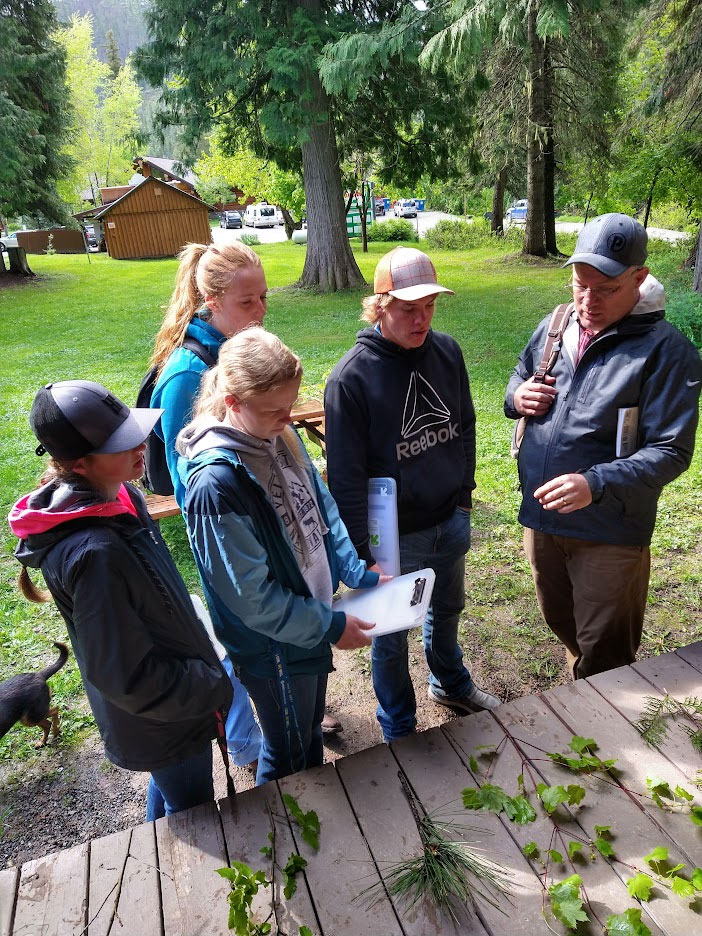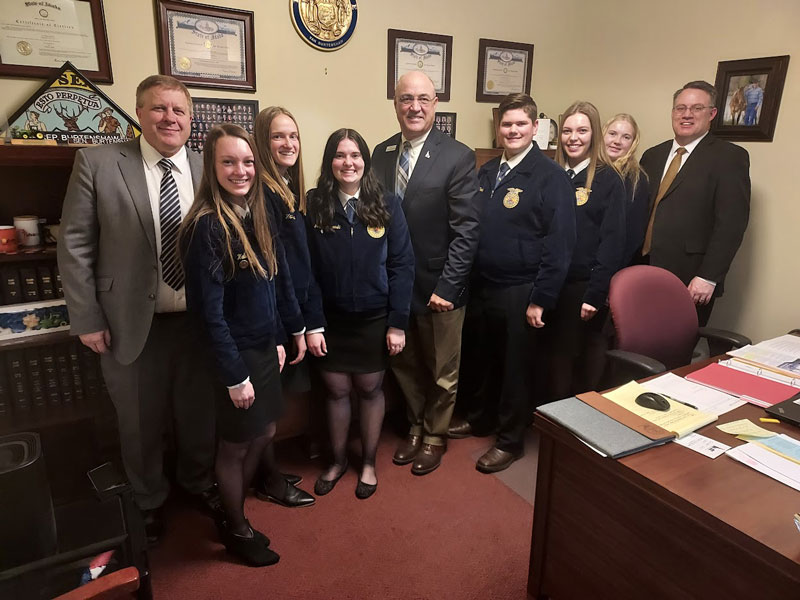Tag: Region 6
Rigby ag educator finds inspiration and influence through professional associations


Lex Godfrey never set out to be a teacher. As a high school student in Utah, he was active in FFA. So, when he started college at Utah State University, he planned to get his degree in veterinary science. But when a trusted advisor suggested Godfrey become a teacher, he planted a seed that sprouted into a 24-year-long career.
After graduation in 1998, Godfrey accepted his first teaching job at Burley High School in Burley, Idaho. There, he met Gaylen Smyer, who would leave an indelible impression on Godfrey.
“I took over for Gaylen. He was a pillar of the community and ag education,” said Godfrey. “It was some awfully big shoes to fill. When he encouraged me to join the Idaho Agriculture Teachers Association (IATA) and the National Association of Agriculture Educators (NAAE), so I could connect with other educators, I took it to heart.”
As a new teacher, Godfrey immediately noticed the benefits of being involved with a professional association. Membership in IATA and NAAE included updates on legislation affecting agricultural education and CTE, resources for advocacy, access to awards and grants, and opportunities to hold leadership positions or join committees. In addition, it also provided plentiful opportunities to meet like-minded professionals.
“Teaching is a calling. Surrounding myself with other passionate educators was a fantastic way to share ideas and troubleshoot early in my career,” said Godfrey. “It was also a chance to network with more experienced educators.”
“Teaching is a calling. Surrounding myself with other passionate educators was a fantastic way to share ideas and troubleshoot early in my career. It was also a chance to network with more experienced educators.”
Lex Godfrey
In 2008, Godfrey’s colleague, Robert Hale, encouraged him to attend his first Career Technical Educators of Idaho (CTEI) meeting. Because he’d had such good experiences with IATA and NAAE, it didn’t take much convincing to attend. CTEI offered a state-specific perspective on CTE, plus access to educators in other pathways. Godfrey felt these new perspectives were just what he needed to develop his craft further. With ten years of teaching under his belt, Godfrey thought he was ready to share his passion with others and assume a leadership role. When the opportunity presented itself, Godfrey decided to run for CTEI President-Elect.

“When I was elected, I thought I’d have a year to shadow the current president and learn the ropes,” said Godfrey. “But she had to step down in the middle of her term, so I became president after about six months.”
Holding a leadership position early in his career accelerated Godfrey’s professional development.
“I soon discovered that, regardless of the pathway, we were all experiencing the same things,” said Godfrey. “Connecting with educators in other areas deepened my knowledge and gave me new insights into teaching and serving my students.”
Though not all educators will choose to pursue leadership positions in their professional associations, Godfrey encourages all educators to become active in their pathway-specific professional associations and CTEI. He has some specific advice for new and seasoned educators alike.
“For new teachers, professional associations are a great way to find a mentor who resonates with you. Especially early in your career, it’s important to find someone to bounce ideas off and support you,” said Godfrey. “And for seasoned educators, professional associations are an opportunity to invest in other professionals and share some of what you’ve acquired over the years.”
Godfrey has taught at Rigby High School since 2016 and has remained active in IATA, NAAE, and CTEI. In addition, he was one of the inaugural members of IDCTE’s statewide CTE Advisory Council, which is comprised of educators, administrators, and elected officials with a vested interest in Idaho’s CTE programs.
“Just having a seat at the table has made a huge difference in my career,” said Godfrey. “It means a lot whenever a colleague, legislator, or elected official calls to ask me what I think. My experience with professional associations has given me influence, and I’ve been able to use that to make an impact.”
Leadership Institute helps business educator achieve career goal, promote CTE


Twelve years ago, Shelley High School business educator Pam Kantack was a big proponent of every student needing a college degree—until she saw what CTE programs were doing for students.
“I didn’t really understand what CTE was until I got into the schools,” said Kantack. “There are all these different pathways that allow students to explore what they love without spending a lot of money to get the training they need to enter the workforce.”
Since then, Kantack has been an ardent supporter of CTE programs and was eager to help more administrators, teachers, parents, and students see their value. So when she received an email from the Idaho Division of Career Technical Education (IDCTE) promoting its Leadership Institute program in 2017, she thought it would be a good way to champion CTE—and achieve her goal of becoming an administrator.
“I didn’t think I would be accepted, but I thought our school could benefit from more leadership on the CTE side, so I applied anyway,” said Kantack.
To her surprise, she was accepted. Over the next three years, Kantack balanced her responsibilities as a business educator with the requirements of the Leadership Institute program, which included attending seminars on state and national CTE policy, completing the Idaho Association of School Administrators Project Leadership program, creating a professional development plan to obtain an Idaho CTE administrator’s endorsement, and attending state and national meetings to expand her knowledge of CTE. Kantack said the state and national policy initiative was the most helpful of all the opportunities Leadership Institute provided.
“My overall goal was to make CTE a priority in our district, but I didn’t know how or who to talk to,” said Kantack. “Through Leadership Institute, I gained the confidence to talk to legislators, tell them what was going on in our classrooms, and ask for their support.”
Pam Kantack
Though the time commitment was at times intense, Kantack says the most challenging thing about the program was developing confidence in her leadership skills.
“It probably took until the second year of the program for me to realize I had the capability to be a leader, accept that power, and move forward with it,” said Kantack. “It was truly life-changing. I didn’t consider myself a leader before Leadership Institute, but my leadership qualities have tripled since I started.”
Kantack used her newfound confidence to ask her administration if she could teach part-time and spend the rest of her time serving as the school’s CTE administrator; he agreed. Kantack has also used what she learned through Leadership Institute in her new role as president-elect of Career Technical Educators of Idaho, the professional association for career technical educators, administrators, and stakeholders in Idaho.
Now that Kantack has graduated from Leadership Institute, she’s more driven than ever to elevate the perception of CTE and advocate for a career technical school in the Shelley School District. “Now everybody in my school knows what CTE means, and they respect it,” said Kantack. “When people see what’s going on and what we’re producing, it’s making a difference.”
 Official Government Website
Official Government Website